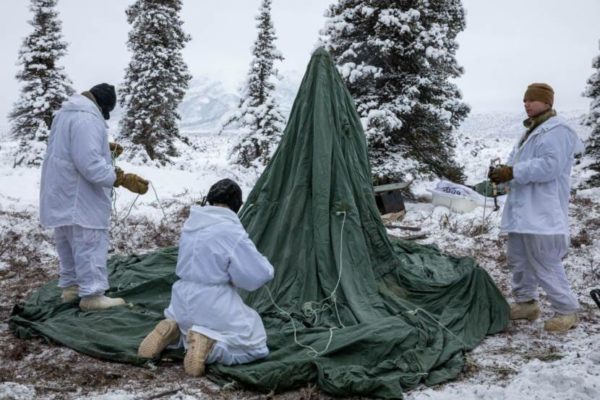
U.S. Army Alaska began a new annual combat training exercise Monday near Fort Greely.
The 11-day training exercise called Arctic Warrior will give soldiers a chance to train in cold weather and test their readiness, and their equipment, to operate in extreme cold.
“You have to be specially trained to deal with the cold and everything that comes with it,” U.S. Army Alaska spokesman John Pennell said Friday.
This is the first Arctic Warrior exercise. Pennell said the Army has always conducted smaller-scale winter training in Alaska, but nothing as big as Arctic Warrior, or Northern Edge, the bigger biennial exercise conducted by the Alaskan Command, which also is based at JBER.
“We plan on doing it annually from now on, always as a winter exercise, and hopefully growing in scale,” he said.
Pennell said Arctic Warrior reflects the Army’s renewed emphasis on operating at high latitudes, after 20 years of primarily focusing on fighting terrorists elsewhere in the world.
“With the global war on terror, the Army kind of shifted our focus away from the Arctic, and more into being prepared to rotate forces into Iraq or Afghanistan, or wherever they’re needed,” he said. “And so, some of our Arctic training has atrophied.”
Pennell said greater readiness is needed because of Alaska’s strategic location, which enables the U.S. military to project power globally. And there’s more activity in the Arctic region now that it’s more accessible since climate change has sharply reduced sea ice and opened up shipping lanes.
“With the warming Arctic, we’re seeing a lot more traffic in the waters off Alaska,” he said. “We’re seeing all the Arctic nations are now having to reconsider defending their northern border.”
The training mainly involves the 4th Infantry Brigade Combat Team Airborne out of Joint Base Elmendorf-Richardson. It’s supported by Air Force personnel and aircraft based at JBER, and units from Fort Wainwright and the Canadian Air Force.
“We’ll have probably more than 1,200 soldiers, all told, between the line units — the infantry, the artillery, and all the support units that have to come in to back those guys up,” Pennell said.
Pennell said preparations for this year’s exercise includes planning for a different kind of adversary — the coronavirus. He said COVID-19 precautions include frequent testing and maintaining separation between units as much as possible.
Tim Ellis is a reporter at KUAC in Fairbanks.




